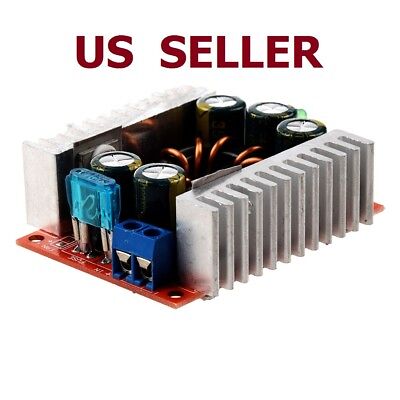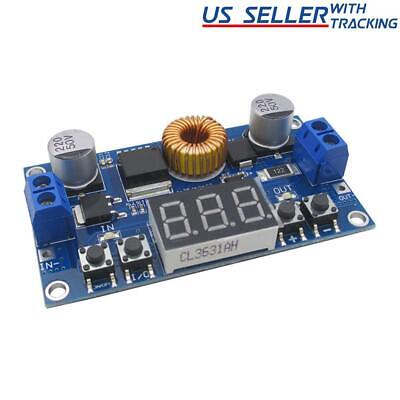I have a project comining up thats requires the speed reduction of a DC motor.
The motor is from a automotive power window. Its 12 VDC, the measured resistance of the motor is 1.3 Ohms. The RPM is approximetly 100, I need to reduce the rpm, so I have to reduce the voltage to around 6 to 8 volts.
This should reduce the RPM to an acceptable level. The supply voltage is 12 VDC.
As I see it there are a couple of ways to accomplish the voltage reduction, resistor, potentiometer, motor controller or a regulated power supply. I can't use the regulated power supply, as this a mobile project and there won't be access to 120VAC to power the regulator.
I could order a motor controller or potentiometer but the delivery time is an issue. That leaves the resistor route.
My question is what value and wattage resistor(s) would I require?
The full load current draw @ 12VDC I understand would be around 9 amps. The motor will never see that much, as its rotating a chute round 180 degrees of rotation, and the friction is vertually zero. So I will guess the amp draw would be only 1 amp @12VDC. In an AC ciruit when the voltage drops the current rises, I'm not sure if thats applies to DC. If thats to be true the current draw would increase to 2 amps.
I've done some calculations from formulas from the net, the results indicate a resistor value of 1 Ohm. That dosen't seem right to me but it maybe. This is why I require some input from the more experinced. Also I have no idea as to the wattage of resistor needed.
Any assistance would be appriciated
The motor is from a automotive power window. Its 12 VDC, the measured resistance of the motor is 1.3 Ohms. The RPM is approximetly 100, I need to reduce the rpm, so I have to reduce the voltage to around 6 to 8 volts.
This should reduce the RPM to an acceptable level. The supply voltage is 12 VDC.
As I see it there are a couple of ways to accomplish the voltage reduction, resistor, potentiometer, motor controller or a regulated power supply. I can't use the regulated power supply, as this a mobile project and there won't be access to 120VAC to power the regulator.
I could order a motor controller or potentiometer but the delivery time is an issue. That leaves the resistor route.
My question is what value and wattage resistor(s) would I require?
The full load current draw @ 12VDC I understand would be around 9 amps. The motor will never see that much, as its rotating a chute round 180 degrees of rotation, and the friction is vertually zero. So I will guess the amp draw would be only 1 amp @12VDC. In an AC ciruit when the voltage drops the current rises, I'm not sure if thats applies to DC. If thats to be true the current draw would increase to 2 amps.
I've done some calculations from formulas from the net, the results indicate a resistor value of 1 Ohm. That dosen't seem right to me but it maybe. This is why I require some input from the more experinced. Also I have no idea as to the wattage of resistor needed.
Any assistance would be appriciated



